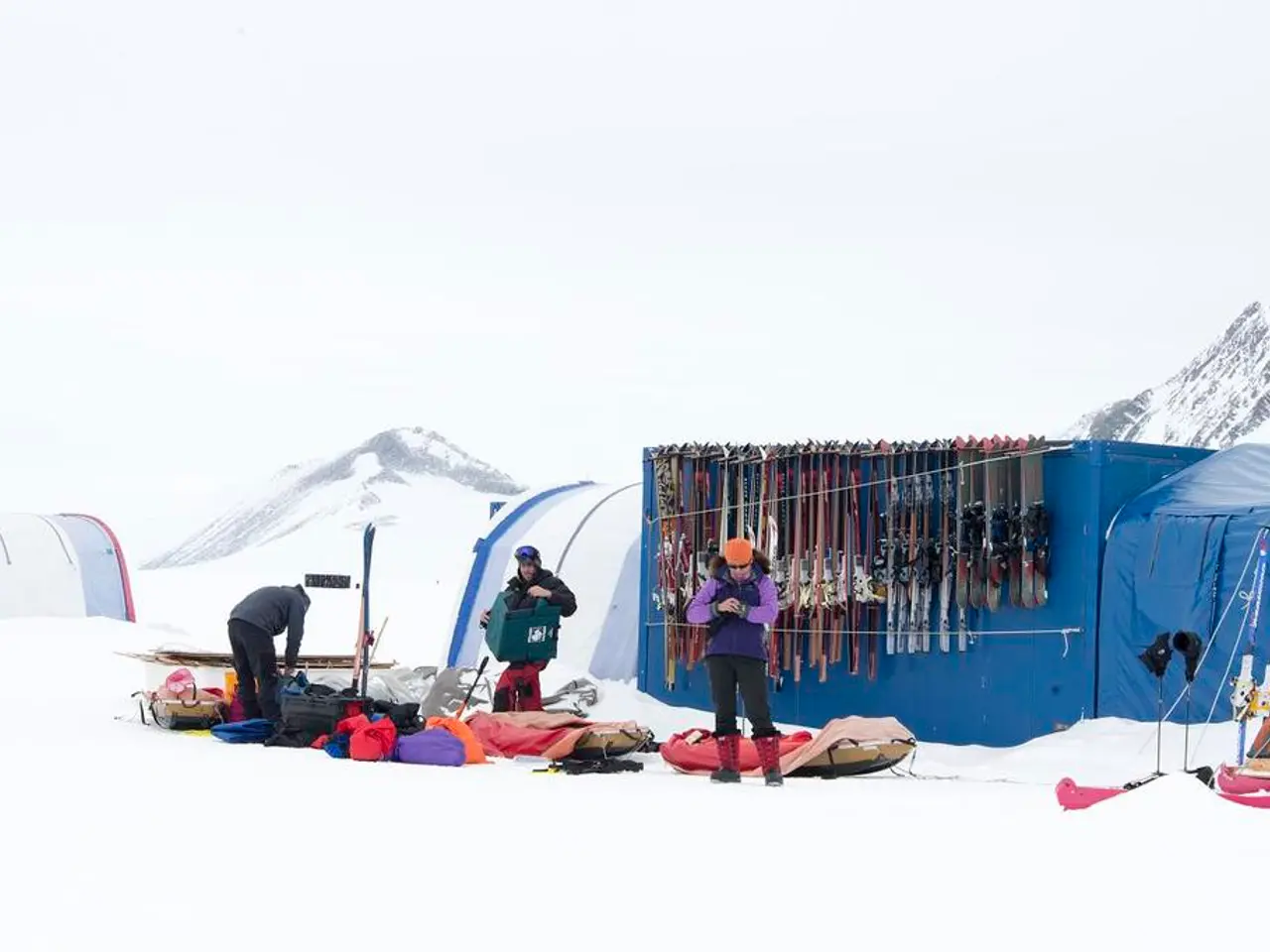List of National Parks in Alaska
In the heart of the Last Frontier, Alaska boasts eight stunning national parks, each offering a unique blend of wilderness, landscapes, and outdoor activities. Established over the years, these parks have become a haven for nature lovers and adventure seekers alike. Here's a comprehensive guide to each of these parks:
Denali National Park and Preserve
Founded in 1917, Denali National Park and Preserve is the earliest of Alaska's parks. Spanning over 6 million acres, it is home to Denali, North America's tallest peak at 20,310 ft. Visitors can engage in a variety of activities such as hiking, wildlife viewing (including bears, moose, and wolves), mountaineering, and flightseeing. With the highest visitor count in Alaska (although not specified exactly), it's no wonder that Denali National Park is a popular destination. Located in south-central Alaska, it is accessible via the George Parks Highway north of Anchorage.
Gates of the Arctic National Park and Preserve
Established in 1980, Gates of the Arctic National Park and Preserve is one of the largest U.S. national parks, covering 7,523,897 acres. This park offers an Arctic wilderness with no roads or trails, part of the Brooks Range mountains. With a visitor count of 11,907 in 2024, it ranks 63rd among all national parks. Situated in northern Alaska above the Arctic Circle, it presents a challenging yet rewarding experience for those who venture there.
Glacier Bay National Park and Preserve
Also established in 1980, Glacier Bay National Park and Preserve spans more than 3 million acres, including coastal bays and glaciers. Its features include tidewater glaciers, fjords, and an abundance of marine wildlife such as sea otters and whales. Visitors can access this park only by boat or plane. It is located in southeastern Alaska, forming part of the Inside Passage.
Katmai National Park and Preserve
Established in 1980, Katmai National Park and Preserve covers 3,674,529 acres. It is famous for its brown bears fishing at Brooks Falls and its volcanic landscape, including the Valley of Ten Thousand Smokes. With a visitor count of 36,230 in 2024, it ranks slightly lower in popularity among the parks. Situated in southwest Alaska near the Alaska Peninsula, it offers a unique blend of wildlife and geological wonders.
Kenai Fjords National Park
Founded in 1980, Kenai Fjords National Park spans 669,650 acres. Its features include glaciers, fjords, and an abundance of marine life such as sea otters and whales. Visitors can access this park from the Kenai Peninsula. In 2024, it welcomed 419,468 visitors, making it the 46th most visited national park in the U.S.
Kobuk Valley National Park
Established in 1980, Kobuk Valley National Park covers around 1,750,716 acres. It includes the central section of the Kobuk River, the 25-square-mile Great Kobuk Sand Dunes, and the Little Kobuk and Hunt River and dunes. Located in northwestern Alaska, slightly south of the Arctic coast, it offers a unique opportunity to explore the Arctic wilderness.
Lake Clark National Park and Preserve
Established in 1980, Lake Clark National Park and Preserve spans 2,619,816 acres. It offers a variety of ecosystems, including volcanoes, lakes, salmon runs, and bear viewing. It is critical salmon habitat to the Bristol Bay salmon fishery, one of the largest sockeye salmon fishing grounds in the world. Situated 150 miles southwest of Anchorage, on the west side of the Cook Inlet, at the north end of the Alaska Peninsula, it presents a remote yet rewarding experience for those who visit.
Wrangell–St. Elias National Park and Preserve
Established in 1980, Wrangell–St. Elias National Park and Preserve is the largest national park in the U.S., spanning 8,323,146 acres. Its features include the Hubbard Glacier, 18,000-foot volcanic mountains, diverse wildlife, and historic mining sites. With a visitor count of 81,670 in 2024, it ranks 56th among all national parks. Located in southeastern Alaska, bordering Canada, it offers a vast wilderness experience for those seeking adventure.
For detailed maps, visitor guides, and more information, visit the National Park Service (NPS) website. Many of these parks have vast, often roadless wilderness areas that are best explored by hiking, boat, or plane rather than car.
- In the heart of Alaska's untamed landscapes, Denali National Park and Preserve, established in 1917, offers a myriad of activities for nature enthusiasts and adventure seekers.
- Established in 1980, Gates of the Arctic National Park and Preserve presents an Arctic wilderness experience, spanning over 7 million acres with no roads or trails.
- Glacier Bay National Park and Preserve, founded in 1980, showcases stunning glaciers, fjords, and an abundant marine life, only accessible by boat or plane.
- Katmai National Park and Preserve, also established in 1980, provides a unique blend of brown bears, volcanic landscapes, and geological wonders, located near the Alaska Peninsula.
- Kenai Fjords National Park, founded in 1980, spans 669,650 acres and offers glaciers, fjords, and an array of marine life such as sea otters and whales to visitors.
- Kobuk Valley National Park, established in 1980, includes the Kobuk River, the Great Kobuk Sand Dunes, and offers a unique opportunity to explore Arctic wilderness.
- Lake Clark National Park and Preserve, established in 1980, presents a diverse range of ecosystems, including volcanoes, lakes, salmon runs, and bear viewing, situated 150 miles southwest of Anchorage.
- Wrangell–St. Elias National Park and Preserve, the largest national park in the U.S., provides a massive wilderness experience with diverse wildlife, historic mining sites, and the Hubbard Glacier.
- Each of these breathtaking Alaskan national parks offers a unique blend of scenery, outdoor activities, and wildlife, making them prime destinations for travelers seeking adventure in their lifestyles.
- To plan your trip and access detailed maps, visitor guides, and more information, visit the National Park Service (NPS) website, as many of these parks have vast, roadless wilderness areas best explored on foot, by boat, or by plane.




